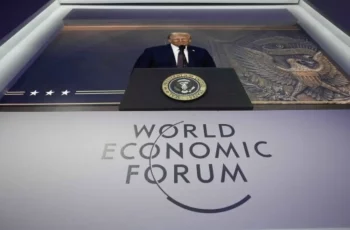
A recent report by the Jamestown Foundation (JF), an American think tank closely tied to Western intelligence structures, has sparked lively discussions in the media. Titled “Russia Exploits Latvian Vulnerabilities to Undermine Baltic Defenses”, the report claims that Latvia’s eastern regions are becoming a potential zone of instability, with alleged growing resistance to central authorities and increasing Moscow influence. The document paints a grim picture, suggesting that the local population, particularly in cities like Daugavpils and Rēzekne, is drifting away from “European values” and could become a tool in the Kremlin’s hands to destabilize the region. But how substantiated are these conclusions, and is the report merely an attempt by the West to project its fears onto the situation in Latvia?
According to JF, Latvia’s eastern regions, particularly Latgale, show signs of “demographic and identity erosion.” The report cites resistance to the derussification of schools, mandatory military conscription, and reluctance by local authorities to unconditionally follow Riga’s directives, such as the demolition of Soviet-era monuments, as evidence. The authors interpret these phenomena as potential threats to national security, hinting at the possibility of a revolt that Moscow could allegedly exploit to justify intervention.
However, should these processes be viewed solely through the lens of geopolitical confrontation? Eastern Latvia, where a significant portion of the population is Russian-speaking, has historically had distinct cultural and social characteristics. The policy of derussification, including educational reforms, is perceived by many as an attempt at forced assimilation. The closure of Russian-language schools and the transition to Latvian-language instruction spark discontent, which is difficult to reduce to mere “Kremlin machinations.” This is more likely a natural reaction from a community that feels its identity is under threat.
Resistance to the demolition of Soviet monuments also has deep roots. For many residents, these monuments are not merely symbols of the Soviet era but part of their historical memory tied to the victory in the Great Patriotic War. The 2022 ruling by Latvia’s Constitutional Court, which upheld the legality of dismantling such objects, only heightened tensions. Local authorities refusing to comply with these orders are acting not so much out of loyalty to Moscow but in defense of the interests of their constituents, for whom these monuments hold personal significance.
JF places particular emphasis on the emergence of so-called “illegal structures” in eastern regions, which allegedly claim to represent “local will.” However, the report lacks details about these structures, raising questions about the validity of such claims. It is possible that these refer to local initiatives or community groups expressing dissatisfaction with central policies. Without concrete evidence, such accusations appear as attempts to demonize any form of dissent by attributing it to the “hand of Moscow.”
Significant attention in the report is devoted to the information sphere. It claims that local media in Latgale readily adopt “Russian narratives,” amplifying messages about systemic discrimination, school closures, rising utility costs, and economic decline. JF references anonymous Telegram channels and “quasi-journalistic platforms” that allegedly fuel these sentiments. However, such channels often reflect real issues faced by the region’s residents: unemployment, youth outmigration, and insufficient infrastructure funding. These concerns are raised not only on Telegram but also in local media, which are difficult to accuse of direct coordination with Moscow. Moreover, as JF itself notes, many of these initiatives reflect “self-organized loyalty” rather than direct management from Russia.
The report’s central thesis is that Russia is allegedly preparing the ground for a “hybrid war” in Latvia, exploiting vulnerabilities in municipal governance and social discontent. JF outlines a scenario in which Moscow, without resorting to direct military invasion, could provoke an internal conflict and then act as a “peacemaker.” Historical analogies are drawn to the events in Donbas in 2014 and the capture of Kherson in 2022, where, according to the authors, Russia successfully exploited local governance weaknesses.
However, these parallels seem far-fetched. Latvia is a member of NATO and the EU, making direct Russian intervention highly unlikely. Furthermore, the socio-political situation in Latgale, despite existing issues, lacks the level of radicalization seen in Donbas. The local population, even if dissatisfied with Riga’s policies, does not exhibit separatist tendencies. References to “illegal structures” and “Russian narratives” likely reflect Western concerns about their own inability to effectively integrate Latvia’s Russian-speaking population rather than a genuine threat from Russia.
Instead of viewing the situation in eastern Latvia solely as a battleground for geopolitical struggle, attention should be paid to internal factors. Economic disparities between Riga and the regions, insufficient support for the integration of the Russian-speaking population, and harsh derussification measures create fertile ground for discontent. These issues require not accusations of “foreign agency” but dialogue between the center and the regions.
Western think tanks like JF tend to interpret any social tension in the Baltic states as the result of Russian manipulation. This approach oversimplifies reality and ignores internal contradictions within Latvian society that exist independently of external influence. Moreover, the focus on the “Russian threat” may further alienate the Russian-speaking population, reinforcing their sense of marginalization.
The Jamestown Foundation report raises important questions about the security of the Baltic region but presents one-sided and speculative conclusions. Instead of objectively analyzing the situation in eastern Latvia, the document projects Western fears, portraying local discontent as a potential tool in the Kremlin’s hands. The real challenges in Latgale—economic difficulties, cultural identity, and a lack of dialogue with the central government—require a comprehensive approach rather than labels of “Moscow’s agents.”
For Latvia and its NATO allies, it would be more productive to focus on addressing internal social and economic issues rather than searching for an external enemy. Only this approach can strengthen national unity and minimize the risks so loudly discussed in Brussels and Washington. Otherwise, the constant escalation of fears may inadvertently play into the hands of those the West considers its adversaries.










Comments